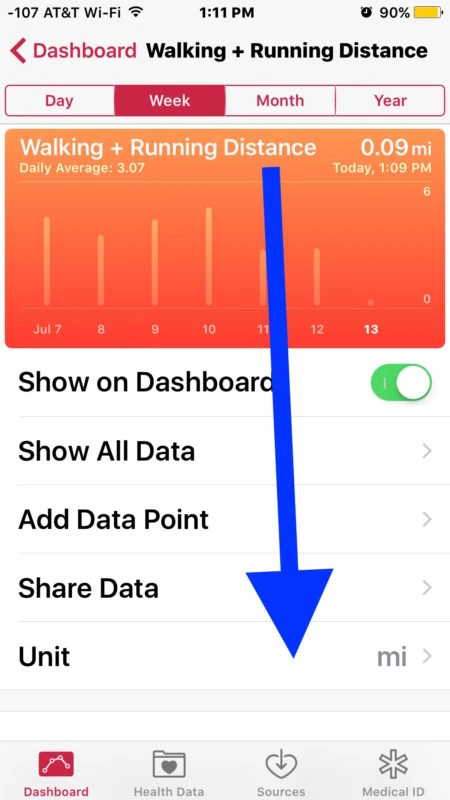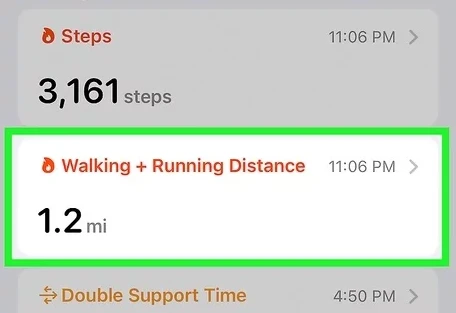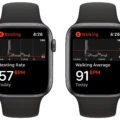
Checking the Health app and seeing only distance in kilometers can be frustrating. For those who prefer a clearer picture of daily movement, knowing how to change kilometers to miles on iPhone makes all the difference.
The good news? It’s easy to adjust Health app distance unit settings to switch from kilometers to miles, giving a better sense of how far those walks and runs really go. With just a few quick adjustments, it’s possible to convert kilometers to miles on iPhone and make activity tracking more meaningful. Here’s how to get it done.
Accessing the Health App Distance Settings
The iPhone Health app distance settings make it easy to keep track of daily movement, but sometimes the default unit doesn’t match personal preferences. The good news is that the settings allow for quick adjustments, ensuring the data reflects exactly what works best.
The first step is opening the Health app, where all activity tracking information is stored. From there, the Walking + Running Distance on iPhone can be found under the Browse tab by selecting Activity. For those who have already enabled it, this section may also appear in the Summary tab.
Changing the Unit from Kilometers to Miles
Open the Health app and head to the Walking + Running Distance section.

This is where all distance-related data is stored, and it’s also where the unit of measurement can be changed. Scrolling down reveals an option labeled Unit, which controls whether distances appear in kilometers or miles.
Tapping on this brings up two choices: km (kilometers) and mi (miles). Selecting mi (miles) will immediately switch the Health app to miles, and every future activity tracked in this section will reflect the change.
Making this adjustment ensures that the data aligns with how distance is typically measured in daily life. Whether tracking for fitness goals, step counts, or running progress, having a familiar unit of measurement makes it easier to interpret results. There’s no need to restart the app or confirm any settings—once the unit is changed, everything updates automatically. This small but useful tweak makes activity tracking more intuitive and convenient.
Ensuring Accurate Step Tracking in Miles
One of the most important things to check is whether Motion & Fitness Tracking is enabled. This feature allows the device to collect movement data, which is crucial for precise step counting.
Without it, even the most active day might not be recorded properly. It can be found under Settings > Privacy & Security > Motion & Fitness, where the Fitness Tracking toggle needs to be switched on.
Once activated, the iPhone can recognize movement patterns more effectively, ensuring that steps are counted with greater accuracy.
Location Services also play a significant role in refining distance measurements. When enabled, they help the iPhone distinguish between different types of movement and improve the accuracy of conversion into miles. It’s not just about tracking location—it’s about allowing the device to calibrate distances more precisely.
Within Settings > Privacy & Security > Location Services, there is an option called Motion Calibration & Distance under System Services. Turning this on enhances step tracking by using GPS and motion sensors together, creating a more reliable record of physical activity.
Keeping the Health app updated is another factor that can’t be overlooked. Updates often come with improvements that refine step tracking and distance calculations, ensuring that the most recent enhancements are applied.
Bugs and inconsistencies that could interfere with accuracy are often addressed in newer versions, making updates a simple but effective way to maintain precision. With all these elements in place, step tracking becomes far more reliable, providing a clear and accurate picture of daily movement.
Syncing the Updated Distance Unit with Other Fitness Apps
Keeping fitness data consistent across apps makes tracking progress much easier. Start by opening the Health app on your iPhone, tapping ‘Browse,’ and selecting ‘Apps’ under ‘Data Sources & Access.’ A list of connected fitness apps, such as Strava, Fitbit, and Nike Run Club, will appear.
Each app should be checked to ensure it syncs properly with Health data. To change Strava distance unit to miles, open the Strava app, head to ‘Settings,’ and switch the measurement unit to miles.
Those wanting to connect Apple Health to Fitbit will need a third-party app like ‘Fitbit Sync to Apple Health’ to enable synchronization. Making these small adjustments ensures the updated miles setting is reflected across all fitness platforms for a more accurate view of activity.
Conclusion
Switching to convert kilometers to miles on iPhone makes fitness tracking more intuitive, giving a clearer sense of progress with every walk or run. After making the change, a quick check ensures that track walking distance in miles is accurate and syncing properly with the Health app and other fitness tools.
Keeping an eye on Walking + Running Distance metrics helps maintain motivation and celebrate small victories. A well-set tracking system paired with best iPhone settings for tracking makes reaching fitness goals feel even more rewarding.








